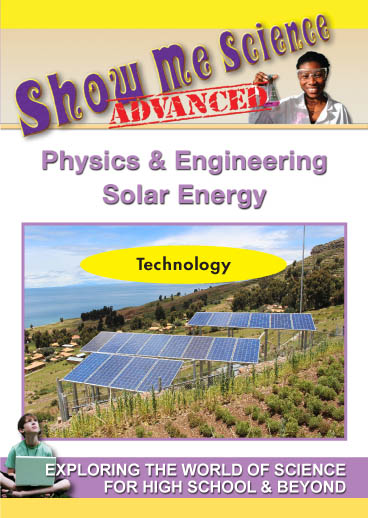Solar energy - power from the sun - is a vast and inexhaustible resource. In the broadest sense, solar energy supports all life on Earth and is the basis for almost every form of energy we use. This program explains the three primary technologies by which solar energy is commonly harnessed: photovoltaic (PV), which directly convert light to electricity; concentrating solar power (CSP), which uses heat from the sun (thermal energy) to drive utility-scale, electric turbines; and heating and cooling systems, which collect thermal energy to provide hot water and air conditioning.
Part of the Show Me Science: Advanced Technology series, this fast-paced, instructional film looks at solar energy technology, exploring both its potential as a clean renewable energy source, and the possibility for career opportunities. According to the narrator, one hour of the sun's enormous energy would be enough to supply the world's power needs for a year. Three types of solar energy systems are illustrated that harness and use solar energy: photovoltaics (PV), in which sunlight is directly converted to electricity, and cells are made up of three layers of phosphorous, crystalized silicon, and boron; solar heating and cooling systems (SHC), where thermal energy is captured to provide hot water and air conditioning; and concentrating solar power (CSP), which uses thermal energy on a much larger scale for utility systems. Three CSP processes are illustrated for solar capture: parabolic-shaped troughs that capture sunlight and heat tubes of liquid running to a central collection system that is hot enough to produce steam to power a turbine; parabolic-shaped dishes that concentrate the sun's energy and focus it to a single point; and a central receiver (or power tower) that uses mirrors to focus light that heats liquid salt and may be stored for later use. Passive solar design in house construction is also covered: built with many windows and skylights, a house facing south would capture heat and light, while awnings and tall trees could provide shade. In the future, other materials could produce more cost-efficient hybrid photovoltaic cells. Offering students a clear introduction to innovations in solar energy, this is recommended.

 Please wait...
Please wait...




